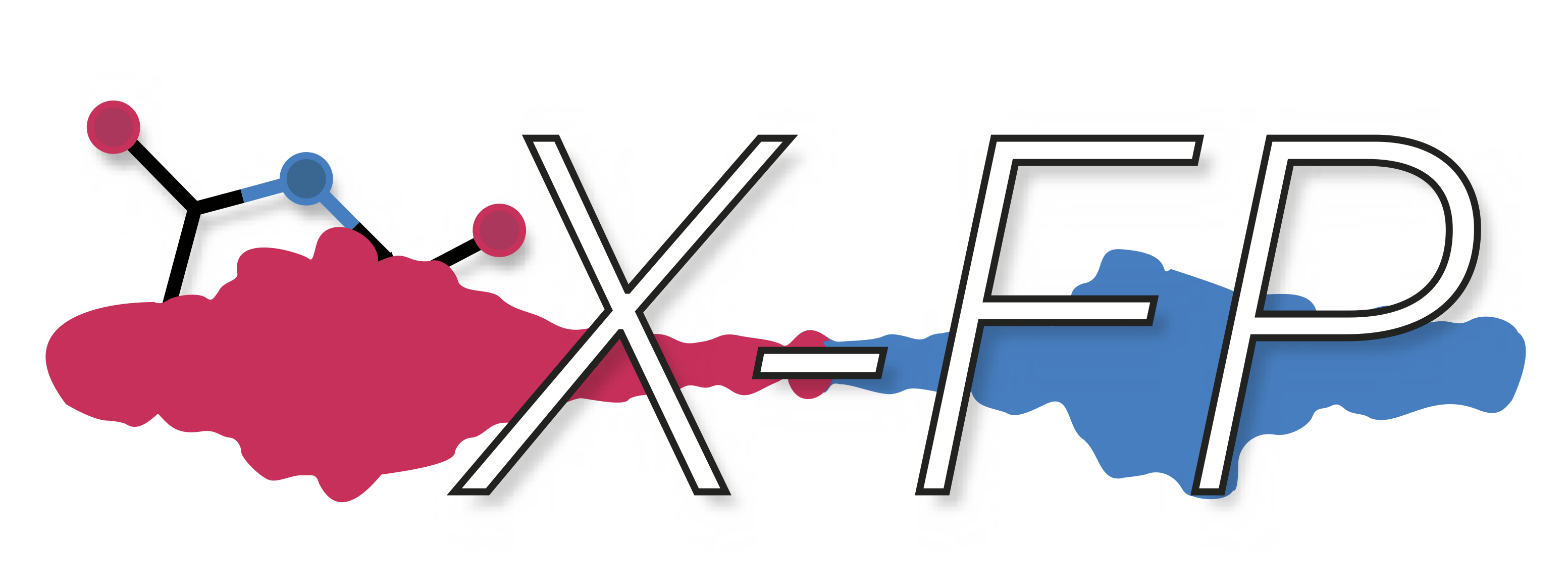X-FP (eXplainable FingerPrints) is a software package which explains the model outputs for the QSAR models trained exclusively on Morgan Fingerprints. It is model-agnostic.
The tool can be installed using either mamba (recommended) or pip-only. First of all clone the repository and
switch to the cloned directory:
git clone https://github.com/czodrowskilab/x-fp
cd x-fpA conda-based installation, e.g. Anaconda, Miniconda, Miniforge or Mambaforge, must be available on your system and
mamba must be installed in the base environment. If no existing conda installation is available, visit
Mambaforge for more information.
To create the conda environment, activate it and install X-FP into the environment, run the following commands:
mamba env create -f environment_generic.yml
mamba activate xfp-env
pip install .There are also environment files for specific operating systems available, e.g. environment_linux64.yml for Linux and environment_osx.yml for macOS. These files contain a fixed package set that was used for developing and testing.
To install the tool using only pip, it is recommended to create a virtual environment first. For this you have to use
a system Python interpreter of version 3.10 or higher. You can check this by calling python3 -V. Run the following
commands to create a virtual environment, activate it and install X-FP into the environment:
python3 -m venv xfp-env
source xfp-env/bin/activate
pip3 install rdkit .If there is an error during the first command, you probably have to install the venv module first. This can be done
for example by running sudo apt install python3-venv on Debian/Ubuntu. You can also skip the first two commands and
just call pip3 install rdkit . directly, but this will install the tool and all dependencies into your system Python
environment which is not recommended.
X-FP is fairly straight-forward to use.
hERG bioactivity data was accessed from CHEMBL 27. A XGBoost binary classification model was trained on 6078 compounds. Test data comprising of 1216 compounds is included. SHAP TreeExplainer object for the model is also included as a pickled object.
# Import X-FP for TreeExplainer
from xfp_tree_explainer import XFPTreeExplainer
# Read the pickled shap_explainer for your model
with open("test_data/pickled_shap_explainer_fp4.pkl", 'rb') as file:
shap_explainer = pickle.load(file)
# Make a X-FP tree explainer object
xfp = XFPTreeExplainer(shap_explainer)
# Load the data (here, the test set - in case you want to visualize the important bits and the chemical substructures they encode in the test set)
df_test = pd.read_csv('test_data/df_test_herg.tsv', sep= '\t')
# Generate the fingerprints of the radius and number of bits on which the model was trained
xfp.fetch_fp_from_df(df_test, smiles_col = "Smiles", n_bits= 4096, use_chirality = True)
# The dataframe (now with extra columns for the RDKit molecule object and the Morgan fingerprints) can be checked by calling:
xfp.input_df
# This dataframe is a normal Pandas dataframe and can be used as such
xfp.input_df.info()
xfp.input_df.head()
# Generate the fragments. This is usually the time-consuming step, and can depend on the size of the dataset and parallelization.
xfp.generate_frags(n_jobs = 10, verbose = True)
# To visualize the number of substructures encoded per bit across the dataset, a box plot can be generated:
xfp.make_substruct_per_bit_plot()
# The SHAP values should be generated first
xfp.generate_shap_values()
# The SHAP summary plot can be generated by calling:
xfp.generate_shap_summary_plot()
# The report can be generated for any desired bits:
xfp.generate_bit_analysis_report([807, 3839, 2698, 3291, 2855, 800], report_title = "X-FP SHAP TreeExplainer Report: hERG Test Set")# Import X-FP for XGBoost in-built feature importance methods
from xfp_xgb import XFPXGB
# Read the FP2 XGBoost classification model
model_fp2 = XGBClassifier()
fp2_model_path = "test_data/herg_model-xgb.json"
model_fp2.load_model(fp2_model_path)
# Make a X-FP XGBoost feature importance object
xfp = XFPXGB(model_fp2)
# Load the data (here, the test set - in case you want to visualize the important bits and the chemical substructures they encode in the test set)
df_test = pd.read_csv('test_data/df_test_herg.tsv', sep= '\t')
# Generate the fingerprints of the radius and number of bits on which the model was trained
xfp.fetch_fp_from_df(df_test, smiles_col = "Smiles", n_bits= 4096, use_chirality = True)
# The dataframe (now with extra columns for the RDKit molecule object and the Morgan fingerprints) can be checked by calling:
xfp.input_df
# This dataframe is a normal Pandas dataframe and can be used as such
xfp.input_df.info()
xfp.input_df.head()
# Generate the fragments. This is usually the time-consuming step, and can depend on the size of the dataset and parallelization.
xfp.generate_frags(n_jobs = 10, verbose = True)
# To visualize the number of substructures encoded per bit across the dataset, a box plot can be generated:
xfp.make_substruct_per_bit_plot()
# The feature importance should be generated first. Any of the in-built feature importance methods can be used.
xfp.make_feature_importance(importance_type = "gain")
# The feature importance plot can be generated by calling:
xfp.generate_feature_importance_plot()
# The report can be generated for any desired bits:
xfp.generate_bit_analysis_report([807, 3839, 2698, 3291, 2855, 800], report_title = "X-FP XGB FI Report: hERG Test Set")Reference for citation will be added soon.
- Hanna Rieger: Validation case study
- Adam Adamczyk: Logo design
